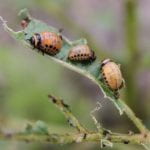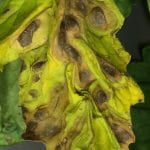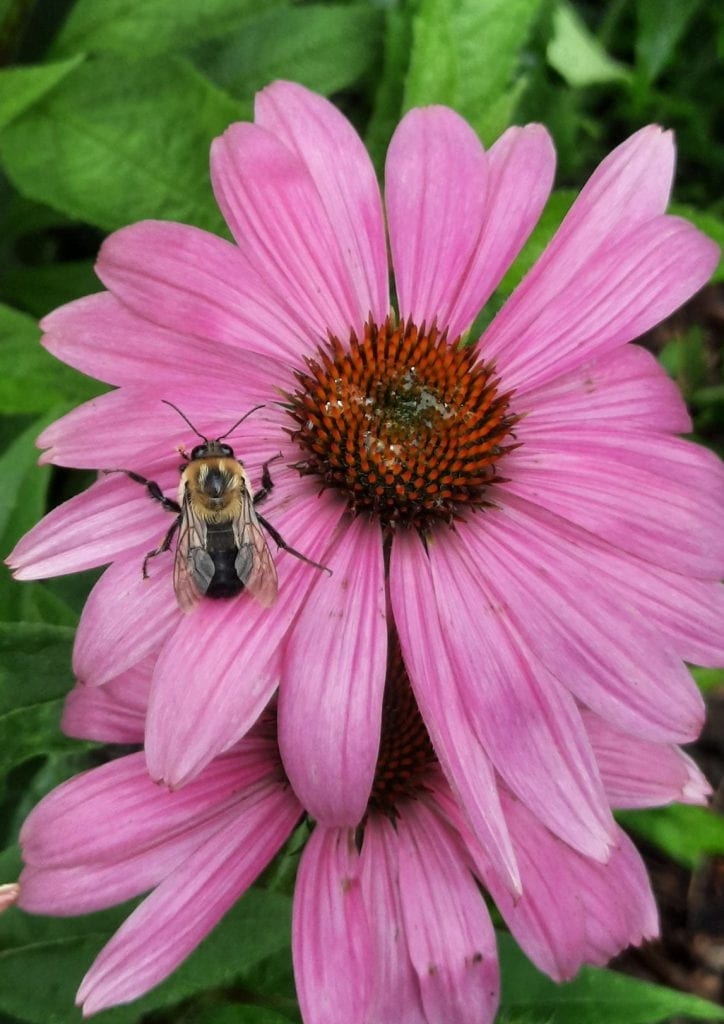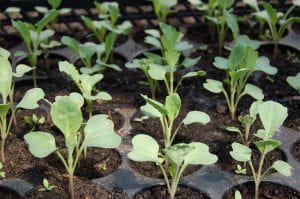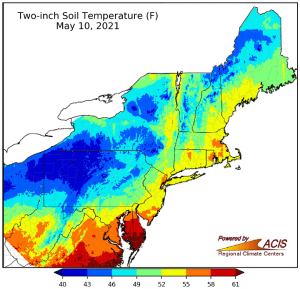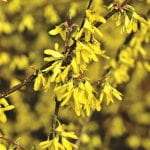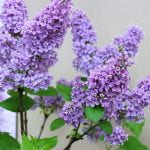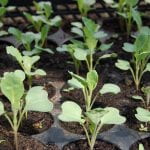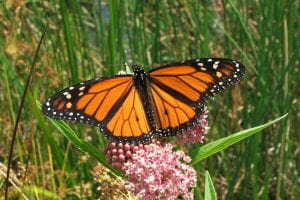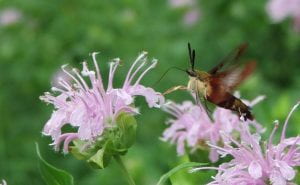by Mary Pobedinsky, Monroe Master Gardener Volunteer
![]() I like growing plants from things I find at the grocery store. I’ve been doing this for quite a while, since third-grade bean experiments for science fairs, through apple, orange and lemon seeds, and on to growing avocado trees from their pits.
I like growing plants from things I find at the grocery store. I’ve been doing this for quite a while, since third-grade bean experiments for science fairs, through apple, orange and lemon seeds, and on to growing avocado trees from their pits.
Here is a list of some of the plants that I have grown from things found in grocery stores.
I’ve learned a lot about growing plants from these adventures. For instance, if you start an avocado pit in water with toothpicks holding it up, it will be very hard to stuff it into a pot later without breaking the brittle root. But you can also grow an avocado tree by just putting the pit in a pot, so the top inch is above the surface—avocados need light to germinate. Apple, orange and lemon seeds may indeed grow into a tree, but they usually won’t flower or produce fruit—they don’t come true from seeds. Beans are still a safe bet, and one bag of dry beans will grow a lot of bean plants—all of the same kind. But why not try something really different?
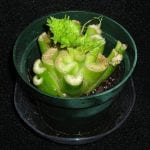
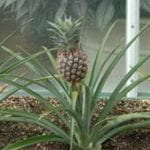
Probably the easiest-to-grow plants available at grocery stores are pineapples and sweet potatoes. Pineapples can make instant house plants. Choose a pineapple with a fresh, green top and cut it off just where the fruit begins to slope, then remove any remaining fruit from the top. Peel off the lowest green leaves–you may see small roots already formed at the base. Plant the top in regular potting soil, just deep enough so it will stand up on its own, and keep the soil and leaves moist until the roots have taken hold. You can grow celery the same way, just by planting the base with a few inches of stalks still attached. New stalks will start to grow within a week.
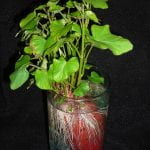
Sweet potatoes are even easier: select a small sweet potato (it will double in size) and place it, pointy end up, in a jar or glass of water. In just a few days you’ll see white dots as the roots start to form, then pretty green vines will emerge from the top. You can keep it going in water for a long time, changing the water when it gets cloudy, or plant it in a pot. In spring you can plant each vine (slip) separately outside and in fall harvest more sweet potatoes!
The produce aisles are full of things that might possibly grow into plants: papayas, pomegranates and even passion fruits have seeds that are easy to grow if a bit messy. WARNING: if you try to remove the red arils from pomegranate seeds so they’re less likely to mold, don’t wear white clothing unless you really like wearing polka-dots.
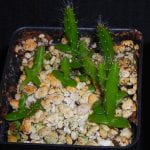

Some of the easiest fruit seeds to grow come from dragon fruit; there are hundreds of seeds in each fruit and they sprout quickly into pretty little cactus plants. As they get larger you’ll learn that they are indeed cactus plants, and very prickly–handle with gloves! Other sources of cactus plants are also found in the grocery stores: red cactus fruit contains lots of seeds, or you can just set a cactus “pad” upright in a pot of soil and it will quickly grow roots.
Some seeds like dates and mangoes may take a month or more to germinate, but date palms and mango trees make lovely house plants. You can speed the process by soaking large seeds overnight before planting them, and then always plant them as soon as possible; freshness is important. You can also grow roots (rhizomes) like ginger and turmeric just by putting small root buds in a pot with the top barely showing.

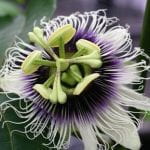
It’s a habit that’s hard to break. Once you have a few plants growing, you may find yourself taking home even more exotic choices just to see what will happen when you plant the seeds. Lychees, guavas, quenepas, passion fruits, and ginger roots may end up on your regular grocery list. Growing plants like this can be fun for kids of any age–and the bonus is that you also bring home delicious fruit!
Resources
My List
-
- Beyond the Avocado Pit – Mary Pobedisnky
Websites
Books
-
- Deardorff, David and Kathryn Wadsworth. What’s wrong with my fruit garden? Portland OR: Timber Press, 2014.
- Langer, Richard W. The After-Dinner Gardening Book. New York: Macmillan, 1969.
- McDougall, Nancy and Jenny Hardy. Ultimate book of step-by-step cooking & gardening: projects for kids. London: Hermes House, 2014.
- McMullen, Gemma. Fruits. New York: AV2 by Weigl, 2019.

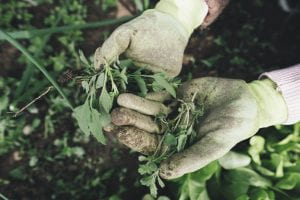 This is a perfect time to get a start on weed management for the spring. Shorter days and colder weather in the months ahead will reduce the activity of plant growth. You want to keep the process as natural as possible. Pull weeds to your hearts content without overly disturbing the soil. Don’t use hoes or rakes, and don’t turn the soil over unless you must. When you disturb the soil too much seeds resting on top of soil get planted in the loose soil, and seeds deep in the soil are brought closer to the surface where they will be able to sprout. Every time you move soil around without a purpose, the roots and seeds of unwanted plants are given the go ahead to sprout away.
This is a perfect time to get a start on weed management for the spring. Shorter days and colder weather in the months ahead will reduce the activity of plant growth. You want to keep the process as natural as possible. Pull weeds to your hearts content without overly disturbing the soil. Don’t use hoes or rakes, and don’t turn the soil over unless you must. When you disturb the soil too much seeds resting on top of soil get planted in the loose soil, and seeds deep in the soil are brought closer to the surface where they will be able to sprout. Every time you move soil around without a purpose, the roots and seeds of unwanted plants are given the go ahead to sprout away. Bare soil is an invitation for weeds to… well, put down roots! Cover weeds that you want gone by the spring with a layer of weighted cardboard. Sometimes I think I shop online more for the cardboard shipping boxes then for what’s inside. I also love using sheets of bark from my fireplace wood in and around my garden plants. Tree bark adds nutrients, cuts down on weed growth, and is a good insulator for tender plants. Grass clippings or shredded leaves make a nice winter mulch, but cut up leaves soon after they fall to the ground before insects and small animals take shelter. Rake only the leaves you need to, leaving a goodly amount for insects to find winter cover.
Bare soil is an invitation for weeds to… well, put down roots! Cover weeds that you want gone by the spring with a layer of weighted cardboard. Sometimes I think I shop online more for the cardboard shipping boxes then for what’s inside. I also love using sheets of bark from my fireplace wood in and around my garden plants. Tree bark adds nutrients, cuts down on weed growth, and is a good insulator for tender plants. Grass clippings or shredded leaves make a nice winter mulch, but cut up leaves soon after they fall to the ground before insects and small animals take shelter. Rake only the leaves you need to, leaving a goodly amount for insects to find winter cover.
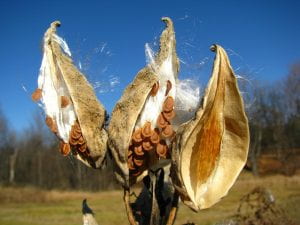
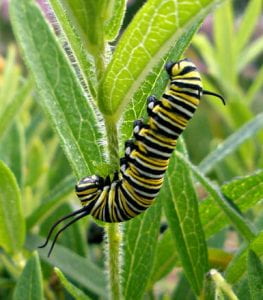
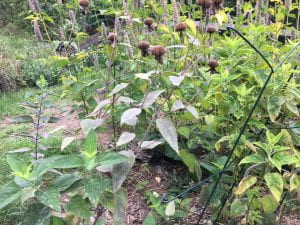
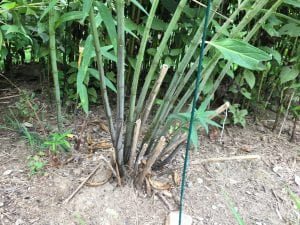
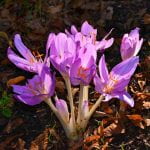
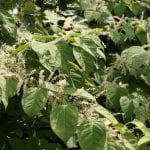
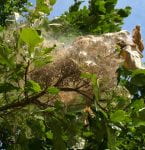
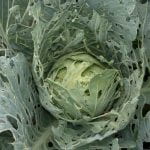

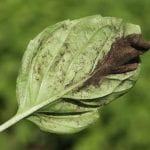

 Keep weeding and mulching.
Keep weeding and mulching. Check your garden for
Check your garden for 